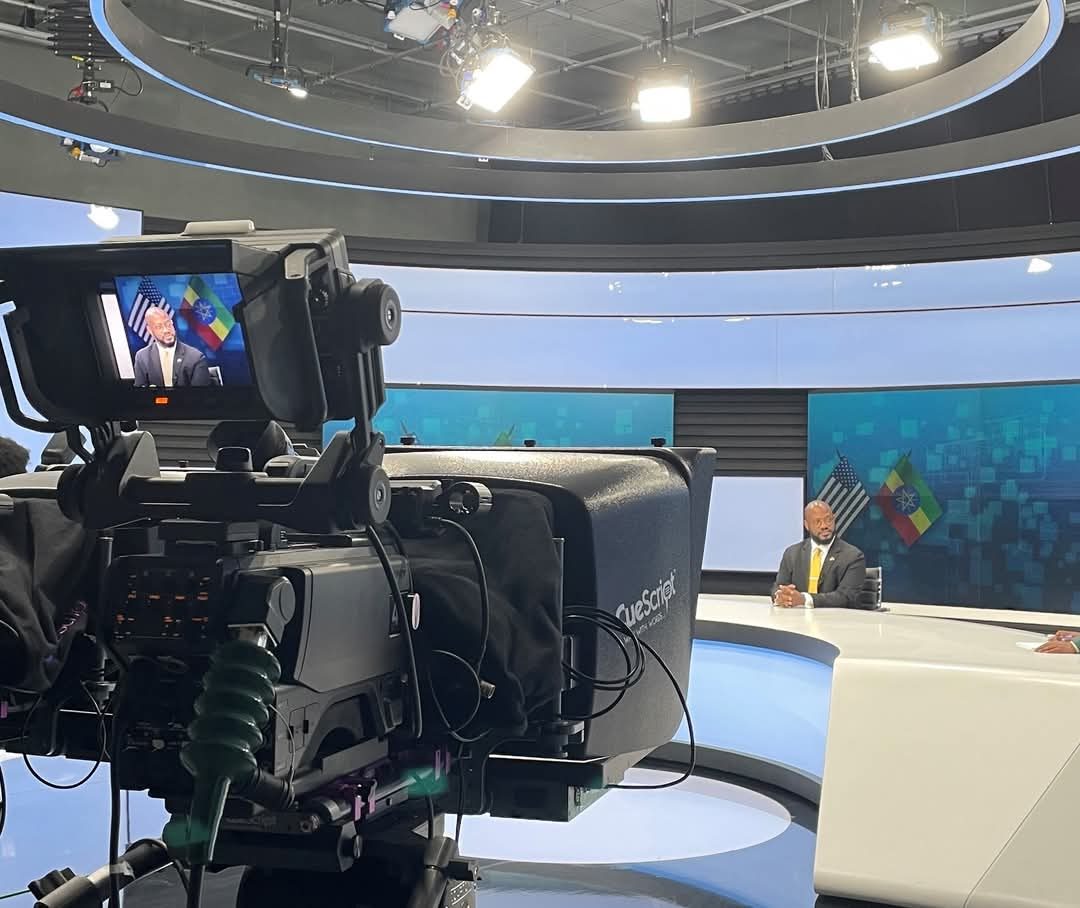By Medhanye Tesfay
Ethiopia is undergoing a profound transformation. At the heart of this shift is a new market-oriented economic policy, framed by a wave of privatization, the opening of previously state-dominated sectors, and a bold geopolitical ambition: to reclaim access to the sea, specifically the Assab port in Eritrea. While the stated reasons revolve around trade, national survival, and economic revival, the deeper drivers point to a web of foreign influence, economic restructuring, and potential regional destabilization.
A Market-Led Pivot
Ethiopia’s leadership has embraced a liberal economic model, shifting from a state-controlled system toward market liberalization. Key public assets — including telecommunications, banking, logistics, and energy infrastructure — are being prepared for sale, with interest from multinational corporations and Western investors mounting steadily.
This shift is not occurring in a vacuum. Ethiopia is grappling with economic exhaustion: inflation, debt, and a dwindling national treasury. The international financial institutions — led by the IMF and World Bank — have offered pathways to relief, but only under conditions that push Ethiopia deeper into the neoliberal framework.
At the heart of this economic opening lies an emerging reality: Ethiopia’s access to a sea outlet is not just a national desire, but increasingly a prerequisite for the type of Western-backed investments envisioned under this new policy regime. A landlocked economy lacks the logistical autonomy global capital prefers — and the pressure to unlock the Red Sea corridor reflects not only Ethiopian ambitions, but also the strategic calculus of foreign investors and allied governments.
The Return to the Sea
Parallel to these domestic reforms is Ethiopia’s increasingly aggressive stance on access to the Red Sea. Though no formal claim has been issued, the port of Assab is widely regarded as the strategic target. It is not just geography or history that makes Assab attractive; it’s the need for direct access to maritime trade routes as Ethiopia seeks to attract foreign capital and become a regional production and logistics hub.
This push has gained subtle, but notable, backing. U.S. Ambassador to Ethiopia Ervin Masinga, in a recent interview with Ethiopian state media, expressed support for Ethiopia’s maritime access efforts. The endorsement signals a broader Western alignment with Ethiopia’s strategic goals — goals that could also serve the interests of the very investors and governments pushing for the country’s economic liberalization. A stable port under Ethiopia’s control would not only lower the cost of doing business, but also give Western stakeholders leverage in shaping Red Sea trade flows.
Privatization, Ports, and Power
As Ethiopia opens its markets, the issue of logistical self-reliance becomes central. Foreign firms investing in energy, agriculture, or telecom infrastructure will require secure, cost-effective export routes. A leased or hostile foreign port complicates investment returns. The logic that underpins privatization also favors control over strategic corridors — not dependency on another sovereign state’s infrastructure.
If diplomacy fails, and Ethiopia seeks to forcibly secure access to Assab, the calculus changes. War becomes a vehicle not only for national objectives but also for ensuring the long-term viability of foreign-backed investments. A conflict framed as patriotic or existential may, in reality, be serving a deeper economic logic shaped outside the country’s borders. In this context, the military option may appear not only as a strategic necessity but also as a market-driven imperative, quietly endorsed by global actors who have vested interests in the outcomes.
Deterrence and Inevitable Conflict
The current military posturing between Ethiopia and Eritrea marks a significant escalation. Both sides are now engaging in military deterrence, that mirror pre-conflict behavior. Tensions are no longer rhetorical or diplomatic — they are increasingly kinetic.
In such an atmosphere, war between Ethiopia and Eritrea appears not only likely but increasingly inevitable. This trajectory is shaped by more than historical grievances or border disputes. It is being accelerated by the economic imperatives of a state in transition, and by the geopolitical interests of actors who see conflict as a tool for reshaping the regional order — particularly around trade corridors and maritime access.
Tigray: A Powder Keg Amid Two Wars
While the Ethiopia–Eritrea conflict looms, Tigray is caught in a dangerous crossfire — not just between two states, but within itself. The Tigray People’s Liberation Front (TPLF), once a dominant political force, is now fragmented. Two main factions have emerged, each aligning with rival powers in the impending war: one faction cooperating with Ethiopia’s ruling Prosperity Party, and the other moving closer to Eritrea’s ruling PFDJ regime.
These two rival powers — Ethiopia and Eritrea — were recently allies in the genocidal war against Tigray from 2020 to 2022. During this brutal campaign, more than 1 million Tigrayans were killed, over 120,000 women were raped in systematic and gang rape operations, and strategic looting and destruction were carried out across the region. Key infrastructure, hospitals, schools, and factories were targeted, and cultural heritage sites were desecrated. The aim was not only military defeat, but also total societal breakdown.
To this day, the territorial integrity of Tigray remains violated: large swaths of western and southern Tigray remain under occupation by Amhara and Eritrean forces. More than 2 million internally displaced persons (IDPs) have yet to return to their homes, living in camps under dire humanitarian conditions. There has been no justice, no accountability, and no political settlement to restore the rights of the Tigrayan people.
Now, the very same powers that waged this genocidal campaign are repositioning — this time as enemies. But their legacy in Tigray has fractured the region from within. As the two states drift toward war, Tigray risks being dragged into a fratricidal civil war, as opposing Tigrayan factions align with the former architects of their people’s suffering.
Regional Instability on the Horizon
A full-scale Ethiopia–Eritrea war would fracture the Horn of Africa. The 2018 peace deal would be nullified, and long-suffering populations would once again become collateral damage in a geopolitical contest. But unlike past wars, this one would be entangled with market interests, privatization deals, and foreign investment strategies, making it far harder to disentangle peace from profit.
In Tigray, this could mean a multi-front crisis: one between state actors, and one internal — a struggle for political dominance, legitimacy, and survival among competing factions with opposing allegiances.
Conclusion
Ethiopia’s market transition and maritime ambitions are not unrelated developments; they are threads in the same tapestry. As state assets are sold off and economic power shifts into foreign hands, the pressure to secure trade autonomy via the Red Sea intensifies. What appears to be national strategy may in fact be the outward expression of an emerging global power alignment — one that sees war not as a tragedy, but as a means to economic ends.
Tigray stands at a perilous intersection — a victim of both regional geopolitics and internal division. Unless bold efforts are made to restore territorial integrity, ensure justice, and build political unity, the region risks becoming not just a battlefield, but a fractured homeland consumed by its own unresolved trauma.


